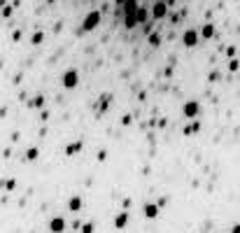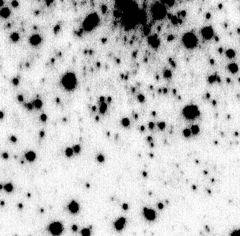LuckyCam on the Nordic Optical Telescope (NOT)This website has been created by the members of the Lucky Imaging team based within the Institute of Astronomy and the Cavendish Astrophysics group of the University of Cambridge, England, UK in order to provide information about this exciting new technique, how it works, the present status of our latest results, and some of our ideas for development of the technique in the future. **** Latest Results: There are exciting new results on observations of very low mass binary candidates described here: Very Low-Mass Binaries and a newly submitted paper on the techniques and properties we have discovered with Lucky Imaging.****Lucky Imaging: General Introduction and Results SummaryA telescope is an instrument that deflects all the rays of light from a distant star or galaxy to form a sharply defined focused image of the object. In space, a telescope will produce an image whose resolution is only limited by the diameter of the telescope and the wavelength of light being focused. If our telescope is on the ground, however, density fluctuations in the atmosphere cause the rays of light to be deflected slightly so that the focused images become slightly fuzzy. The atmospheric fluctuations change fairly rapidly, on timescales of tens of milliseconds, causing the quality of the focused image also to change rapidly. By using a high-speed camera we can choose those images that are least affected by the atmosphere and combine them to give a much higher resolution image then we would get if we simply added together all the images irrespective of their quality. By doing this we are selecting those fortunate moments when the fluctuations in the atmosphere are at the smallest. This is what we call "Lucky Imaging". Lucky imaging techniques may be used both for astronomical observations with telescopes and for ground-ground imaging such as surveillance work with long focus lenses. Lucky imaging is not a new idea. It was originally suggested by Fried (1978) and these principles have been used really quite extensively by the amateur astronomy community who have been able to take very high quality images of bright objects such as Mars and the other planets. There is more information about Amateur Lucky Imaging here. The results of Lucky Imaging can be quite dramatic. The
effects of atmospheric density fluctuations mean that the detail that may be
detected in an image is limited. Using a large diameter telescope will allow one
to gather more light but will not increase the detail in the image once a
certain size has been reached that depends on the atmospheric conditions locally
(and these change from day-to-day), and the wavelength of light used. For
typical atmospheric seeing of about one arc second this limits the maximum
resolution to that obtained in the visible with a telescope of only 10
centimetres in diameter.
The effect on the image quality obtained is shown below.
Two pictures are shown of the same region of a globular star cluster M15, taken on the same telescope within a few minutes of one another. The first was taken with a conventional high-quality scientific CCD camera while the second was taken with a high-speed CCD camera with the best 10% of images selected and combined to produce the image shown. To see the full frame images, Click Here. weiter 
|


